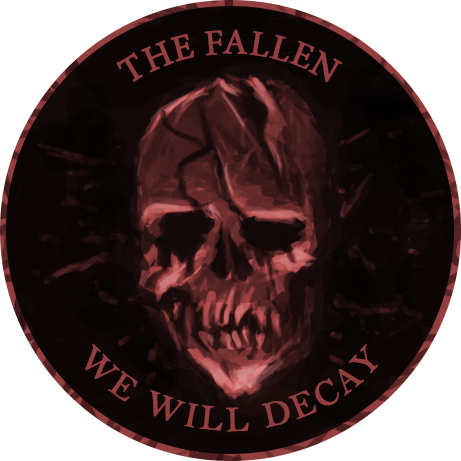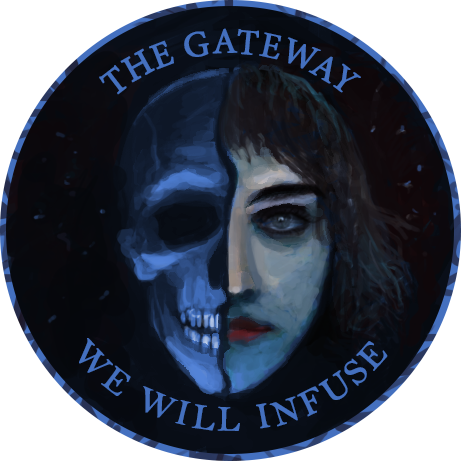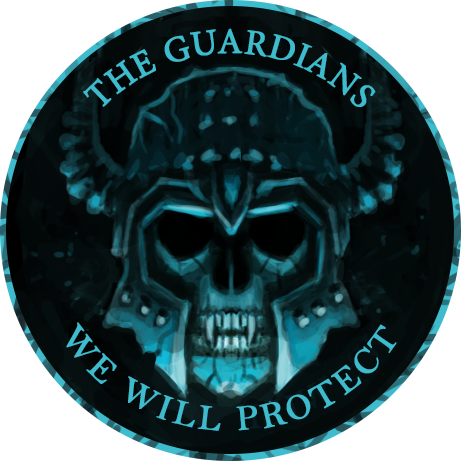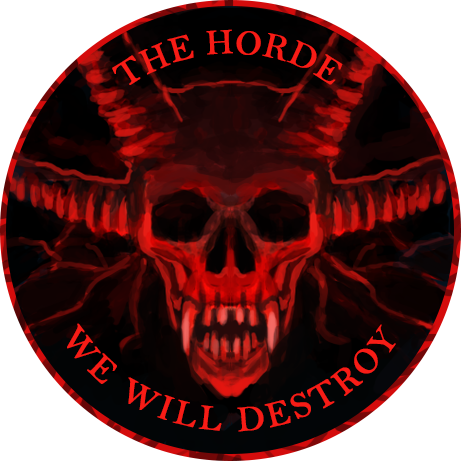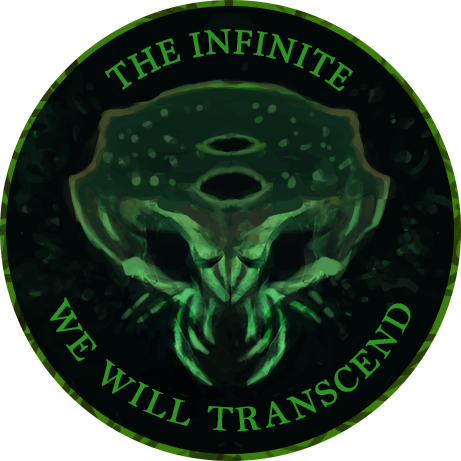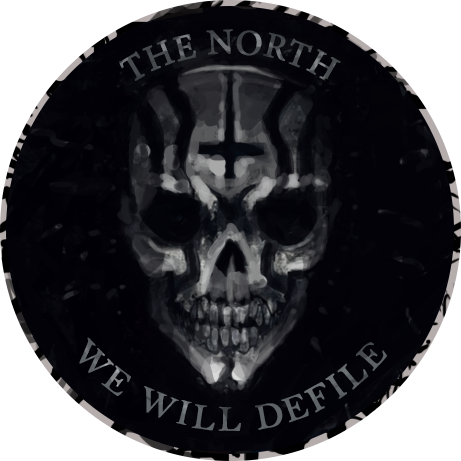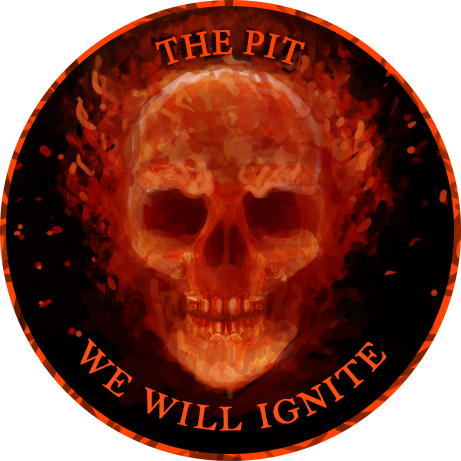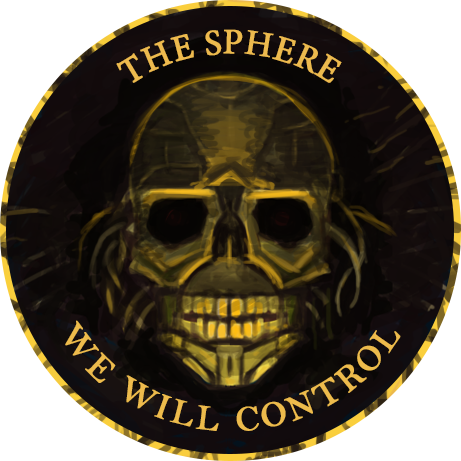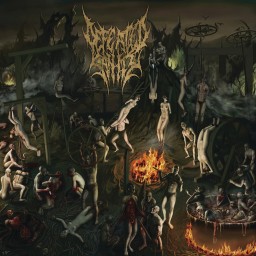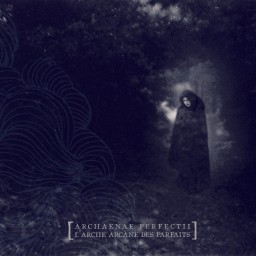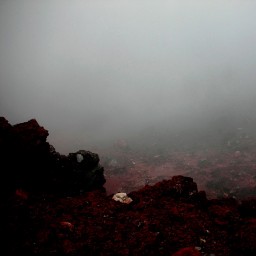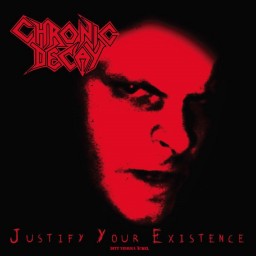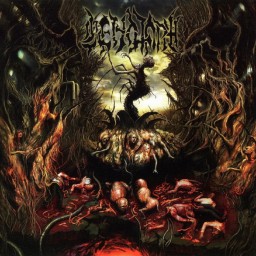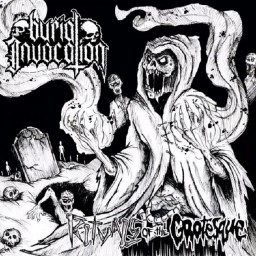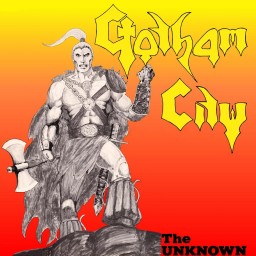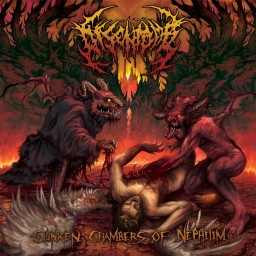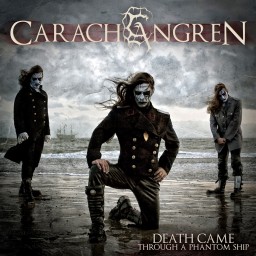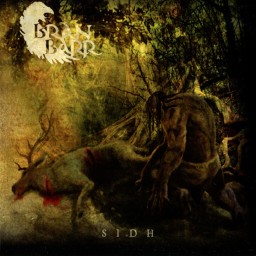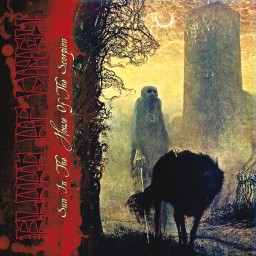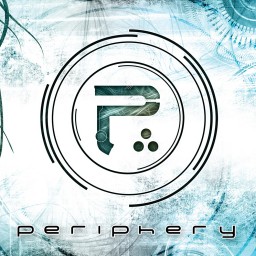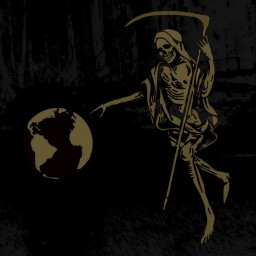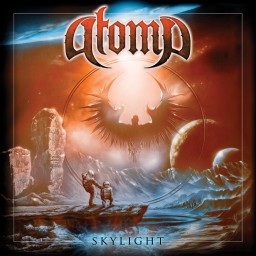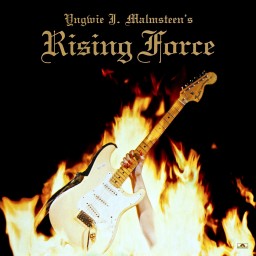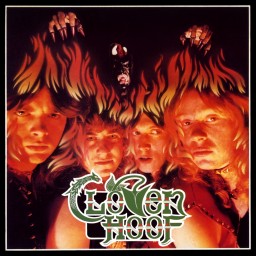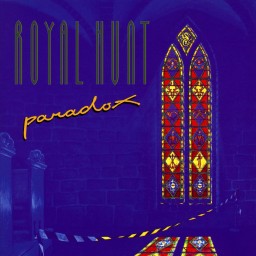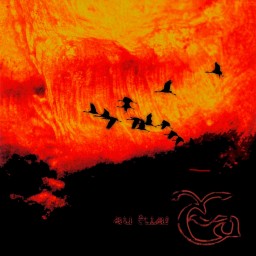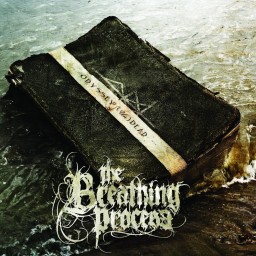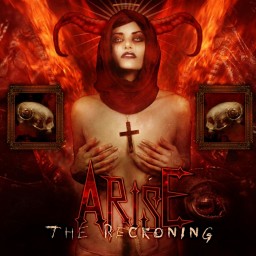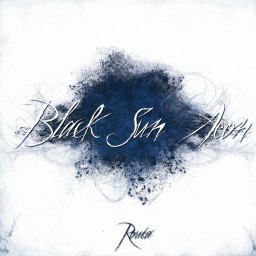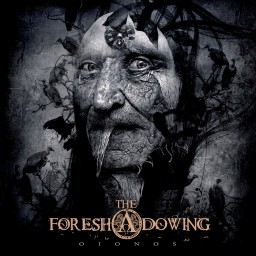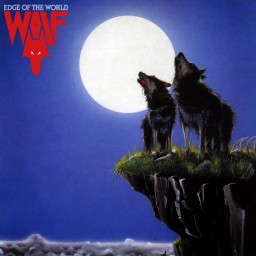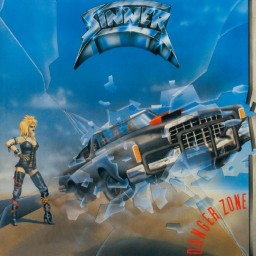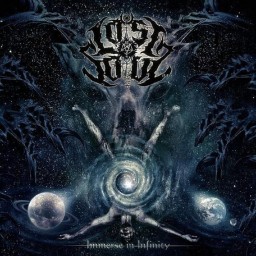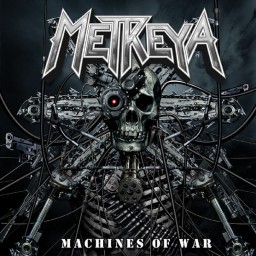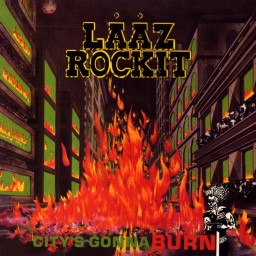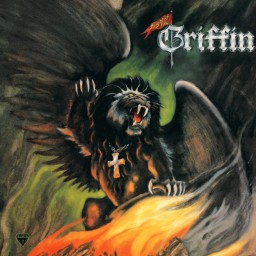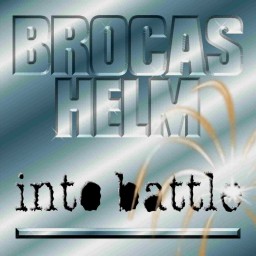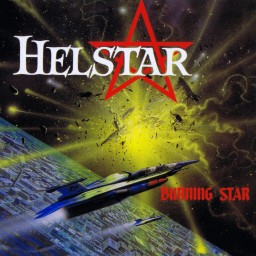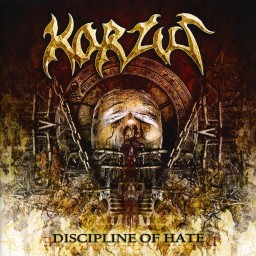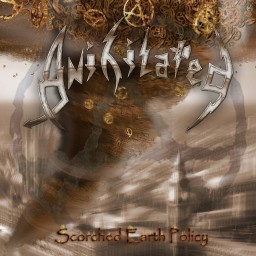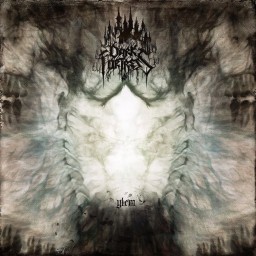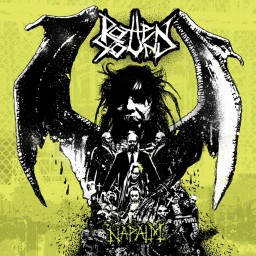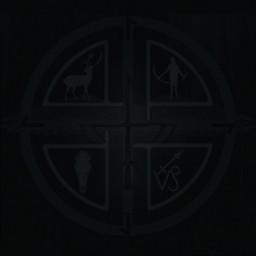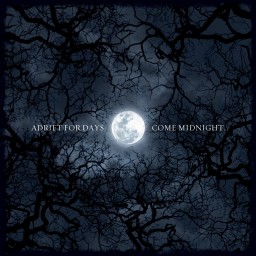Daniel's Reviews
Some very brutal death metal on display here & it certainly has its moments however Defeated Sanity have pretty much ripped their sound directly from Suffocation's "Effigy Of The Forgotten". They sound exactly the same as Suffocation for the most part but go way overboard with the technicality thing which doesn't give the listener much of a chance to really dig their teeth into any of the chunky riffs on display. The unintelligible vocals sound exactly like Frank Mullen (Suffocation) too. The jazzier drumming & bass parts sound pretty ridiculous with the gutteral vocals. Am I the only one who thinks that the modern brutal death metal bands are going overboard with the blast beats? I think that once blast beats pass a certain speed they sound like a parody of themselves & lose all their intensity. Worth a listen but very overrated.
Genres: Death Metal
Format: Album
Year: 2010
Some fairly standard UK death metal which you've heard many times before. Dead Beyond Buried have clearly spent quite a bit of time listening to Morbid Angel as the influence is quite obvious. Unfortunately "Inheritors Of Hell" doesn't stand up too well in comparison. The production is fairly muddy & the musicianship is nothing special. There are none of the wonderful captivating Trey Azagthoth style guitar solos on show & John Biscomb is certainly no Pete Sandoval. However, having said all of this, there are some riffs on here that show some promise & I wouldn't discount some good material coming from this band in the future once they find their own sound.
Genres: Death Metal
Format: Album
Year: 2010
This fourth full-length album from French black metallers Celestia doesn't really present anything new or attractive. It's run-of-the-mill black metal with simple generic riffs & a less than exciting atmosphere. I just find it to be quite dull to be honest.
Genres: Black Metal
Format: Album
Year: 2010
US band Castavet's debut album "Mounds Of Ash" is a very good example of avant-garde black metal. They've hit on a sound that is fairly original & progressive but still manages to fit comfortably into the black metal genre. In fact they remind me of Norway's Ved Buens Ende quite a bit at times. There are some moments here that don't quite work (such as the intro section of "Mounds Of Ash") but these are made up for by the brilliance of other sections (such as opener "Red Star Sans Chastity"). The production, whilst not being incredible, does the band no harm & the musicianship is good. I'd like to see a darker atmosphere on future releases (perhaps some keyboards too) but I find this to be a promising debut that suggests that Castavet may be bound for bigger & better things.
Genres: Black Metal
Format: Album
Year: 2010
Ereb Altor may as well have called this album "A Tribute To Bathory" because they have simply remade "Hammerheart" here. That's not necessarily such a bad thing but they've missed most of the tension & intensity that Quorthon was so masterful at creating. However "The End" is pretty well written & performed & will definitely gain some interest. The band will have to find some originality if they're to win me over though. Ereb Altor should do a bit more research into how Bathory achieved such heights without sounding cheesy which cannot be said of some moments here.
Genres: Doom Metal Viking Metal
Format: Album
Year: 2010
Mid-1980s style death/thrash in the vein of early Dark Angel, Kreator & Possessed with a suitably raw production. If you are into that sound & can look past the poor musicianship you will probably enjoy this but it's certainly not on the same level as the bands Chronic Decay are attempting to emulate. The "Iron Man/Darkness Descends" cover at the end is entirely unnecessary too.
Genres: Death Metal Thrash Metal
Format: Album
Year: 2010
Turkey's Cenotaph have given us a pretty generic brutal death metal album here. It's fast & intense throughout but there is really very little to distinguish the tracks apart from each other. I'm not sure about everyone else but I find the vocals to be pretty annoying as it seriously doesn't sound like he is even trying to make any type of actual words. It just sounds like one long groan throughout the album. Plenty of pinch harmonics going on. Another area where Cenotaph need improvement is in song structure & overall tightness. The elite bands like Suffocation have a way of balancing the technicality with song structures that flow nicely instead of jumping around all over the place randomly. Cenotaph don't possess this skill yet. This album is not bad by any means but it's not something I'd listen to again.
Genres: Death Metal
Format: Album
Year: 2010
Some fairly uneventful & generic death metal in the vein of Incantation's "Upon The Throne Of Apocalypse". It includes a similarly raw production but doesn't offer much energy or originality.
Genres: Death Metal
Format: EP
Year: 2010
Swedish four-piece outfit Gotham City formed in the city of Umea in Sweden in 1980 & would quickly assume a moniker whiich one would assume is a reference to Batman which is not a particularly metal subject matter it has to be said. It’s certainly not one that does anything for the common consensus that metalheads are generally nerdy pimple-faced virgins anyway… & we know all too well that that idea is long way from the truth, don’t we? Well at least I do.
Gotham City had kicked off their recorded music career with a well-regarded six song EP by the name of “Black Writs” in 1983 which I must admit I’m still yet to hear but from all reports it suffers from a noticeable lack of talent in the vocal department. Thankfully though, that message seems to have gotten back to the band because Gotham City’s lone full-length studio album “The Unknown” features a brand new front man who is apparently a vast improvement on the original. To be fair, Anders Zackrisson does seem to hint that he might possess a little bit of talent. He champions a fairly unintimidating & accessible voice that I’d guess would probably feel more appropriate out the front of a rock band rather than a metal one but I have to say that his execution isn’t amazing here. He’s noticeably pitchy at numerous stages across the tracklisting & these failings go a long way to distracting me from the better riffs on offer which doesn’t help Gotham City’s cause too much.
Musically, this record sits extremely close to the New Wave model of traditional heavy metal. In fact, so much so that you’d never guess that “The Unknown” came from another part of Europe. The production is very raw & noisy which was a very common characteristic of New Wave debuts. Could this possibly be a conscious decision from the band so as to sound as close to their idols as possible? It’s a definite possibility & if that’s the case then they couldn’t have succeeded much better than they have really. Equally so is the instrumentation which sees Gotham City readily incorporating all of the typical NWOBHM tools like galloping rhythms & guitar harmonies. There’s little doubt that Iron Maiden have played a pretty major role in Gotham City’s sound but to their credit the band have steered well away from blatant plagiarism even if they never sound all that original either. I often hear a fair bit of classic Black Sabbath in some of the heavier riffs employed which can’t be a bad thing & although I wouldn’t say it’s all that obvious there’s a subtle punk rock edge to some of this material. Despite that, there’s a surprising amount of compositional maturity here but sadly the band’s technical limitations leave the album sounding a little too much like a cheap home-made demo tape. The drums sound a little loose although definitely not helped by the production & the guitar performances are predominantly pretty weak. Especially the guitar solos which I regard as being well below par by this stage in the heavy metal game. Thankfully for us metalheads, you won’t hear too much of the hard rock influence that was engrained in most of the NWOBHM material over the previous 5 years. This is a pure heavy metal release with a few of the tracks even dipping their toes into genuine speed metal territory & one song “See How It Flyes” even appearing to be one of the earliest examples of European power metal.
There are a couple of pretty decent songs here but sadly “The Unknown” suffers from a real lack of quality in the song-writing, production & performances. It could also do with more of a defined identity as this simply sounds far too similar to the now-waning NWOBHM sound that was quickly being overtaken by the Americans. I guess Gotham City just sound a little safe & tame in comparison. Not to mention a little dated given that they’ve kinda missed the boat with the New Wave sound. I’m afraid I’m gonna have to toss Gotham City into the same basket as their countrymen Heavy Load as simply not being for me.
Genres: Heavy Metal
Format: Album
Year: 1984
I first noticed Disentomb whilst browsing through a Terrorizer magazine back in 2010. I remember being really excited to see an advertisement for an Australian brutal death metal band as they’re few & far between these days. There was a nice glossy picture of the album cover & everything looked very professional. I immediately put Disentomb on my list of bands to check out. And I fully intended to but as it turns out I didn’t get around to it until a couple of years later when I saw their name on the list of supports for the Cannibal Corpse Australian Torture tour alongside Perth-based technical death metallers Entrails Eradicated. After I’d bought my ticket to the Sydney show I had no excuse not to give them a run.
Disentomb vocalist Jordan Philp & guitarist Jake Wilkes were childhood friends growing up in Brisbane, Queensland. They became interested in metal music together through albums like Morbid Angel’s “Formulas Fatal To The Flesh” & Napalm Death’s “Punishment In Capitals” when they were around 11 or 12 before being lured into the more brutal end of the death metal spectrum. The idea of putting together their own band was discussed in late 2008 with Jake suggesting that they name themselves after a song title from Disgorge’s “Cognitive Lust Of Mutilation” demo (1992). Eventually Disentomb began writing original material in March 2009 & wasted no time in putting together some songs for a promo CD which they released in August 2009. The promo (featuring the tracks “Subterranean Burial” & “Gutted” which were both rerecorded for the album) showed quite a bit of promise & its blend of speed & brutality immediately interested me however I couldn’t quite get past the sloppiness of the performance. I felt that if the band tightened up & worked on their precision that the debut album could be something really worth listening to as I really liked the sound & concept.
Regardless, the two-track promo certainly did the trick as they received immediate interest & signed a single album deal with Amputated Vein Records within two months of its release. The next year was spent writing material for the album & “Sunken Tomb Of Nephilim” was released in November 2010. Italian artist Marco Hasmann designed the cover art based on a concept the band had come up with. It depicts two demons tearing a human to shreds in a particularly hellish environment & is fairly standard fare for the brutal death metal sub-genre. Having said that, it really does sum up the lyrical theme of the album which combines your typical gore-inspired material with anti-religious themes. After reading the lyrics to some of these tracks it becomes pretty obvious that God & his buddies are not on Disentomb’s Christmas card list.
The first thing I noticed when I cranked the album on my car stereo was that the overall production is very different from the promo (which was apparently recorded in their rehearsal room using mobile equipment). It’s much more compressed & lacks the brightness of the promo. The guitar sound in particular comes out quite muddy. I certainly like the sound on the promo much better. The bands style hasn’t progressed much in the year since the promo either which isn’t really too surprising when you consider that they had still only been together for such a short time. There are no bold attempts at anything too original but that’s not usually a huge factor for the brutal death metal audience as experimentation can often be seen as “selling out”. I can detect strong Disgorge, Suffocation & Defeated Sanity influences & there is no doubt that Disentomb are right up there from a brutality point of view. They spend the majority of the album blasting you into submission but still include some slower slam style sections here & there.
Unfortunately the technical deficiencies that were evident on the promo are just as evident here. Jake & bassist Tom “Pox” Joice are in a constant battle to stay in time with drummer Henri Sison during the faster & more technical sections. I don’t like to be too harsh but I honestly don’t think Henri was up to playing this material yet & that’s particularly noticeable during periods of prolonged blasting where things get very messy & out of control. The slower crunchier parts are very heavy & I can really get into them so I’d like to see more of those parts in future. Jord’s vocals are exceptionally effective over those sections too. Death vocals don’t come much more deep & gutteral than these & I don’t mind Jord’s style. Don’t try to make out a single word of his lyrics though because you will be unsuccessful. Tom’s bass performance is generally pretty decent without being terribly ambitious. The compressed nature of the production makes it difficult for him to shine here but he certainly fills out the bottom end. The sludgy guitar sound & the sloppiness of the drumming don’t do guitarist Jake any favours but he performs admirably enough too. Chunky palm-muted & tremolo-picked US death metal riffs are the order of the day with occasional use of pinch harmonics. I think a few guitar solos wouldn’t go astray to break things up a bit. It’s difficult to pick out highlight tracks as the combination of the compressed production & the chaotic performances ensure that the songs don’t really stand out from each other too much & are also not terribly memorable.
There is certainly plenty of promise shown on “Sunken Tomb Of Nephilim” but I don’t see myself giving it too many repeat listens. It might be interesting to see how Disentomb develop over their next couple of releases though & they certainly put on a brutal live show.
Genres: Death Metal
Format: Album
Year: 2010
Carach Angren deserve a pat on the back for effort here as they've clearly put a lot of time & effort into this album. "Death Came Through A Phantom Ship" is a concept album chock full of blasting symphonic black metal & theatrical interludes. The band's performance is very tight & all the instruments are well separated & audible although the mix could've been quite bit heavier because the guitars & drums sound a bit weak. All of the black metal vocals are intelligible & you can comfortably follow the storyline. This is probably a bit of a turn-off for me as I really don't get into the Cradle Of Filth style theatrics & the storyline seems like a bit of a wank to me. The roleplay tends to downplay the aggression of the riffs in my opinion. The music also follows the storyline to an extent & I would just prefer the band to write evil black metal (which they are quite clearly capable of) rather than the over-the-top symphonic theatrics. All of the tracks are pretty good but nothing really stands out & makes me gurn like a bitch. So yeah... nothing much to see here people.
Genres: Black Metal
Format: Album
Year: 2010
Genres: Black Metal Folk Metal
Format: Album
Year: 2010
Blood Of Kingu is a solo project from Roman Saenko who is well know for his work under various different names such as Hate Forest, Dark Ages & Drudkh. Roman's second release under the Blood Of Kingu moniker, entitled "Sun In The House Of The Scorpion", is one beast of an album. It's great to hear black metal with this kind of aggression but also with a fair dose of atmosphere. The vocals in particular are some of the most powerful I have heard in a long time. They almost sound inhuman & are far closer to a death metal growl than your traditional black metal shriek. I have absolutely no idea what is being said & I find it strange that no lyrics are available as I had read about the projects interesting subject matter.
The epic "Incantation Of He Who Sleeps" is the highlight track with it's incredibly powerful mid-paced first five minutes giving way to some ferocious blasting in the second half. The sound is generally pretty good for this style of music & presents the instrumentation well. My only gripe with this release is that the musicianship is not as strong as it could have been. I'd just like to see everything tightened up a bit. I'd also like to see more of the powerful mid-paced sections instead of a constant blast feast. The tribal interludes could be incorporated into the overall sound a bit better too. As they are, they seem almost out of place surrounded by the rest of the material. Regardless, if you like your black metal of the raw & ferocious variety then this release should satisfy your tastes nicely.
Genres: Black Metal
Format: Album
Year: 2010
There is an incredible amount of musicianship on show on this release. I cannot even start to think of how much time this band spends scripting each of these tracks. This is probably the most technical metal release I have ever heard. But this is also it's downfall. There is just too much going on. I find that I can't latch onto anything. They need more repetition otherwise everything just goes over my head. All the instrumentalists are amazing. The vocals alternate between a Phil Anselmo style growl & a clean style similar to Linkin Park. The Meshuggah influence is very clear. All the elements are here for some crunching metal tunes but I just think that Periphery needs to tone down the technicality a bit in order for people to be able to follow what's going on & find hooks that stay in your head for more than a second. It's very hard to go nuts to music like this.
Genres: Progressive Metal
Format: Album
Year: 2010
Very basic old-school black metal which reminds me of early Burzum & Darkthrone with touches of Celtic Frost. Unfortunately this release in far too simple & I become bored very quickly. There is very little atmosphere or originality on offer. The shrieking vocals are very much in a Varg Vikernes style while the riffs are pretty unadventurous with basic power chords being the order of the day. How Terrorizer magazine found a 9/10 review in this album is anyone's guess!
Genres: Black Metal
Format: Album
Year: 2010
Wow! It's really refreshing to hear something as original as this. AtomA have combined a vast array of influences (including progressive metal/rock, post-rock, ambient & even trance) to create a truly epic sound that is heavily reliant on synthesizers & dreamy vocals. I'm not really sure this can be called metal as the vast majority has nothing to do with metal music at all. I really love the peaks & troughs format with lots of deep sections as well as huge climaxes & the attention to detail in the soundscapes on offer here is noteworthy. There are some moments where things get a little too trancey (ie cheesy/girly) for my liking but overall this is a quality release & I look forward to hearing more from AtomA in the future.
Genres: Progressive Metal Post-Metal
Format: Album
Year: 2012
Lars Johan Yngve Lannerback (otherwise known as Yngwie J. Malmsteen) was born into a musical family in Stockholm in 1963 & formed his first band at just twelve years of age. As a teenager he immersed himself in classical music with 19th Century Italian violin virtuoso Niccolo Paganini & 18th Century German composer Johann Sebastian Bach becoming a complete obsession. But it was years earlier when a seven year-old Yngwie first saw that famous footage of Jimi Hendrix smashing & burning his guitar on stage that he knew where his destiny would ultimately lead him. Deep Purple & Rainbow guitarist Ritchie Blackmore quickly began to compete with the classical composers for a young Yngwie’s attention & he began developing an innovative & virtuosic technique that would see him redefining what was possible with the guitar a decade later.
In 1978, Yngwie recorded a demo tape that would end up in the hands of Shrapnel Records label head Mike Varney in the United States in 1982. Mike was obsessed with guitar heroes but the potential he heard in this young shredder was on another level to anything he’d previously encountered. So when Mike’s new Shrapnel recruits Steeler agreed to upgrade their guitarist in 1983 Mike new just the guy for the job. He contacted Malmsteen who was easily convinced to relocate to the United States to chase his rock star dream. Yngwie’s short tenure in Steeler saw him becoming the main drawcard for the band's self-titled debut album & this resulted in an offer to join one of his idols in former Rainbow & MSG front man Graham Bonnett with his new hard rock outfit Alcatrazz. After blazing away on their debut studio album “No Parole For Rock ‘n’ Roll” as well as a subsequent live album, Yngwie was offered a solo deal with Polydor Records which would see him releasing his “Yngwie J.Malmsteen’s Rising Force” album in 1984.
Now I’ve had an extremely long relationship with this record so revisiting it has opened up more than the odd memory from my childhood. I first discovered Yngwie through a song called “Heaven Tonight” from his 1988 album “Odyssey” & picked up the full album a short time later. I can distinctly remember my absolute amazement at what this guy was capable of upon first encountering him. I was well acquainted with the guitar hero concept at the time but Yngwie was in league all of his own. The style of the music wasn’t exactly my cup of tea but I was thoroughly enthralled with what this guitarist was doing with his instrument so I found myself continually returning for more. I quickly accumulated the rest of Yngwie’s back catalogue in the first three albums “Rising Force”, “Marching Out” & “Trilogy” & as much as I don’t like to admit it, I have a strong knowledge of all of them. But it really was the debut that was the most influential on me. Partly because it’s more instrumental than the others & leaves a lot less room for cheesy vocal & keyboard hooks. But that’s certainly not all there is to it because this record really did sound like nothing else that was available at the time & it managed to define a new subgenre in the process.
Rising Force was somewhat of an international super group with Yngwie having recruited former Jethro Tull drummer Barriemore Barlow, Swedish keyboard virtuoso Jens Johansson (who would later go on to play for Dio & Stratovarius) & talented hard rock singer Jeff Scott Soto (who would later go on to front well-known US AOR group Journey) while he opted to fill the empty bass guitar role himself. There’s no question that the sum of those talents combine to form a pretty powerful heavy metal unit but you rarely lose sight of the band leader as his virtuosity often defies believe.
The production job isn’t ideal as the rhythm guitars are somewhat dwarfed by the rhythm section but this leaves plenty of room for the lead guitar tracks which is understandable I guess. I would definitely have preferred some more power from the rhythm guitar tracks though. Interestingly the engineering & mixing of “Rising Force” was handled by a gentlemen by the name of Lester Claypool who would later go on to make a name for himself as the fantastically talented bass-playing front man from Californian funk metallers Primus.
Now you may or may not have heard of the term “neoclassical metal” before but this record is certainly the origin of this fairly niche subgenre. You can very clearly hear Yngwie’s classical background & he seems to have developed an entirely new method for playing the guitar by trying to replicate the enormously talented Pagganini’s violin technique with enormously wide vibrato, ridiculously precise & impossibly speedy melodic runs & a little-known & extremely challenging right-hand technique known as sweep-picking that would soon take the world by storm. The roots of sweep-picking actually go way back to the 1950’s with various jazz guitarists like Les Paul, Tal Farlow & Barney Kessel having employed it in a more primitive fashion but it’s likely that Yngwie first heard it used by his idols Ritchie Blackmore & Uli Jon Roth in the 70’s. No one had taken it to the level that we would hear on “Rising Force” though with Yngwie virtually developing his entire technique around it & implementing it so fluidly into his runs that my jaw’s left lying on the ground still to this day. And when you combine the dazzling technique with some exotic melodic runs that have clearly been borrowed from classical music then you get a sound that took the classically influenced rock & metal stylings of Randy Rhoads & Uli Jon Roth to a level that was almost unimaginable before. But it’s not just in the solos that we see this classical influence as Yngwie has implemented it across the board in the song structures & instrumentation. The overall result sounds very much like a balanced combination of classical music & traditional heavy metal with a couple of songs leaning more towards hard rock, several hinting at the influence of jazz-fusion masters Allan Holdsworth & Al Di Meola & one of the two vocal tracks “As Above, So Below” possessing a noticeably more epic metal sound that oozes of the later European power metal movement with Soto’s vocal histrionics reminding me a fair bit of Manowar’s Eric Adams.
I have to admit that even though I’m enamored with the technique on display, I can’t say that all of this material appeals to me. When the song structures are at their most classically influenced I find it all a bit too overblown to really become engaged with while there can be no question that the power metal track I just mentioned falls clearly outside of my comfort zone. But despite this, I can’t help but really enjoy the “Rising Force” album. I think it includes a few belter riffs which is not something I can always say of Yngwie’s more vocal & solo-driven later material. I also think we have some of his most interesting compositional work here. If you’re a guitar nut then this should be a no-brainer. This record literally created the guitar-shred instrumental album concept & still hasn’t been topped for sheer technical brilliance. But if you’re a little averse to egotistical show-ponyisms then I’d suggest that you steer well clear of it.
Genres: Heavy Metal Neoclassical Metal
Format: Album
Year: 1984
Cloven Hoof are often described as coming from the so-called “second wave of British heavy metal” which is a tag that seems to have been defined predominantly to cover bands that arrived too late in the game to be covered by the original New Wave tag. But given that the New Wave had floundered somewhat after the swift rise of the MTV generation & the US thrash & power metal movements, I find the term to be pretty much disposable. To be fair though, the band had been around in one form or another since right back at the beginning of the New Wave movement so they might count themselves as being unlucky that they missed the boat when it came to releasing recorded material. But despite their lack of records on the shelves, Cloven Hoof had always possessed a penchant for the theatrical with their stage shows including elaborate outfits & props & the band members taking on pseudonyms based on the four elements of water, fire, air & earth. I’m not sure that I find those pseudonyms to be particularly metal though. Fire yeah but not the other three. I’m sure it had some sort of relevance from a lyrical perspective but perhaps not for names of band members.
Cloven Hoof finally released their self-titled debut album through Neat Records in 1984 & it’s developed somewhat of a cult following over the years. My initial impression was that the production doesn’t do the band any favours at all with the tinny guitar sound & overall noisiness & distortion having a pretty significant impact on my listening experience. That’s not to say that this was anything terribly unusual for a NWOBHM debut but it doesn’t really align with the maturity of the music on display. The AC/DC crunch is certainly evident in the guitars & it’s not hard to pick up the origins of Cloven Hoof. It’s a pure New Wave production effort that’s a long way from the new US metal sound which was completely devoid of any remaining rock influence.
Vocalist David Potter doesn’t sport the operatic style of so many of the period's elite heavy metal vocalists. He preferred a more masculine approach that does the job but lacks the x factor to take Cloven Hoof to the elite level. He’s not bad as such but I do feel that the band’s appeal is capped by his vocal limitations. It’s hard to put my finger on what’s missing but if pushed I’d suggest that he just doesn’t have any star quality.
Musically, Cloven Hoof tread similar ground to the more senior NWOBHM acts but present their ideas in a unique way. Perhaps not with the focus I’d like though. The seven tracks see them jump around a little bit stylistically with a mixture of lengthy progressive metal workouts, shorter & more traditional heavy metal numbers & also one track that was clearly an attempt to clone AC/DC’s crunchy brand of hard rock. There’s a truckload of Iron Maiden here with the guitar melodies being amongst the album highlights. I really enjoy that side of the band. The simpler songs like “Nightstalker” & “Laying Down The Law” seem to draw from the classic Judas Priest model while the more ambitious progressive material showcases the band’s clear penchant for more complex arrangements. And given the dark lyrical themes of witchcraft & Satanic rites, I’d suggest that bands like Mercyful Fate & Witchfynde have played a part in Cloven Hoof’s overall style. Angel Witch pops up at times too.
In theory this all sounds like it should be right up my alley. I mean it’s a particularly metal focused release with lots of variety & darker lyrical themes. What’s not to like about that? And to an extent that ends up being the case but the overall inconsistency of the tracklisting leaves the closing nine minute epic “Return Of The Passover” with the responsibility of pulling the album back from the brink of failure in my opinion. A feat it only just manages to achieve thanks to some genuinely innovative musical exploration from the band musically including what sounds like a Jimmy Page inspired section that sees the use of a violin bow being applied on the guitar during the intro section. “Cloven Hoof” is an overrated but consistently interesting release that should appeal to fans of the NWOBHM sound but I don’t suggest that you harbour any expectations that it will compete with the big boys of the movement.
Genres: Heavy Metal
Format: Album
Year: 1984
This was my first listen to Danish progressive metal band Royal Hunt & I found that their sound sits somewhere between Dream Theater & Yngwie J. Malmsteen's Rising Force. It's progressive metal with strong symphonic & neoclassical components. I liked most of the first half of the record. Songs like "River Of Pain" & "Message To God" have a polished sheen & catchy singalong choruses that generally appeal to my taste but the second half of the album sees a much greater emphasis put on the cheesier symphonic & neoclassical elements & I found my interest waning pretty quickly. The production & performances are very good & I would think that "Paradox" would appeal to plenty of people out there but it drops a bit too far outside of my comfort zone really.
Genres: Progressive Metal
Format: Album
Year: 1997
A really solid album full of pure funeral doom metal. This record achieves it's goals nicely by creating an atmosphere of depth & majesty. The orchestral sections are particularly effective & well-written. The only thing that annoys me a little is that there are a fair few discordant, off-key moments from the guitarists who are not exactly virtuosos. I'm not sure whether these are intentional or not but they aren't bad enough to kill the overall vibe. The long track lengths work really nicely for music of this sort too. It reminds me of Mournful Congregation quite a bit. Enjoy this late at night in a dark room.
Genres: Doom Metal
Format: Album
Year: 2010
This album shows off influences from various different sub-genres of metal but manages to maintain a good energy level throughout. The Breathing Process' sound is equally reliant on melodic death metal, black metal & progressive metal. The musicianship & songwriting are great & the progressive influence does not take away from the brutality of the music which is rare these days. The drums are very triggered sounding but you become used to it after a couple of tracks & forget about it. I find the main vocals to be very powerful & aggressive & they really drive the band through some of the more symphonic Cradle Of Filth style moments which I usually don't go for. There are some seriously crunching riffs on here. A really solid album.
Genres: Death Metal Metalcore
Format: Album
Year: 2010
A very solid melodic death metal outing with lots of energy & a nice heavy production. The musicianship is good too. Unfortunately I find this record to be a bit one dimensional. Every song follows the same formula & most of the riffs are reworks of At The Gates' "Blinded By Fear". But if you still really love that sound you will be into this album as it still has something to offer. Just don't expect to be blown away with the originality on show as there is very little.
Genres: Death Metal Thrash Metal
Format: Album
Year: 2010
A decent although fairly generic melodic death/doom metal release that didn't really grab my attention. The band has a nice crunchy sound reminiscent of many of the Swedish melodic death bands. I can detect a very strong "Brave Murder Day" era Katatonia influence in some tracks & these deeper melodic moments tend to be the highlights of this double CD. I'd like to see the band develop these sounds further on future releases as they are clearly very good at the dreamy doom stuff. The rest of the album is nothing new or fresh. The clean vocal choruses are not really my cup of tea. What is it with double CD releases of late? I see no gain in extending this to two CDs. It would've served the band much better to leave it at one.
Genres: Death Metal
Format: Album
Year: 2010
The first thing I noticed about this fourth full-length release from German gothic metal duo The Vision Bleak was the terribly cheesy album cover. I’ve never been one to judge a book by its cover but this came pretty close to changing that.
The album opens with “A Curse Of The Grandest Kind”, a four minute orchestral piece with spoken poetry layered over the top. It comes across as overly theatrical and a bit cheesy to my ears. The Vision Bleak have always featured a theatrical edge but I have to admit that I’m not really a fan of this element. At various moments throughout the album I couldn’t help being reminded of the vampiric musical Jason Segel’s character writes in the film “Forgetting Sarah Marshall” which is not really a positive thing. Allan B Konstanz’s vocals are a problem for me during the first few tracks too as they reek of Rammstein a lot of the time. I greatly prefer his more aggressive black/death style as well as his Sisters Of Mercy influenced material on show later in the album.
The guitar riffs tend to hover somewhere between the basic death metal riffs of the Swedish death metal scene of the early 1990s & the obvious My Dying Bride influence. The second half of the album certainly pushes the My Dying Bride sound more & benefits from it greatly. Allan’s vocals are more effective & the atmosphere is far more intense. The epic “Mother Nothingness (The Triumph Of Ubbo Sathla)” is a clear highlight. I’d like to hear The Vision Bleak pushing that sound further on future releases.
“Set Sail To Mystery” will certainly appeal to both the gothic crowd as well as the metalheads. It’s not bad but, in my opinion, the theatrics get in the way of the deeper atmosphere required to produce classic gothic metal material.
Genres: Gothic Metal
Format: Album
Year: 2010
I really wanted to rate this album a bit higher than I have as it is full of well produced, high quality gothic metal in the vein of Paradise Lost. The musicianship, production & songwriting are all of a very high class. The only thing letting The Foreshadowing down are Marco's vocals. Although he is quite a competant frontman I can't help but think that his style (somewhere between Depeche Mode & Spandau Ballet) does not suit this style of music. The bands sound is fairly heavy & intense but Marco simply sounds too light to drive this band to the level that it should definitely be at. Still, "Oionos" is worth a listen if you enjoy the gothic metal genre.
Genres: Doom Metal Gothic Metal
Format: Album
Year: 2010
Most of you probably aren't very familiar with 1980's "Midnight Rider/Red Lights" 7” single from obscure NWOBHM outfit Black Axe. But I quite liked Black Axe's sound, despite the fact that the two tracks differed from each other fairly noticeably. Well there’s a bit of a story to tell following that release as while the single wasn’t exactly a huge success for the band, it did create enough of a buzz in the underground heavy rock scene to attract interest from Chrysalis Records, who then proceeded to sign the band on for their first full-length album. Along with the recording deal, Chrysalis also asked the band to change their moniker from Black Axe to Wolf.
The newly named Wolf entered the studio in 1982 & put down the tracks for their debut studio album but, for reasons that I’m not entirely sure of, Chrysalis decided to shelve their plans to release the record. This led to Wolf’s debut sitting & gathering dust for the next two years which in effect eliminated any chance of success the band may have had to begin with. By the time “Edge Of The World” finally saw the light of day, the NWOBHM movement was swiftly declining along with the commercial interests of the bands it housed. In fact, I’m not even sure that Wolf were still together by the time the album came out which is a further indication of just how badly their record label had f**ked their rock star dreams. It’s a very sad story for a band that unquestionably deserved better. But let’s take a look at the album in question & see just how big a waste of potential it might have been.
The first thing I noticed about “Edge Of The World” is that it includes both of the songs from the Black Axe single, with “Midnight Rider” & “Red Lights” both being amongst the stronger material on the tracklisting. I’m not sure if they were re-recorded or not as I haven’t done a comparison but the production job on the album is very poor & quite inconsistent so it’s possible that the versions of these songs are the originals give the variation in sound across the album. The rhythm guitars are very thin & the drums sound pretty light-weight for the most part. Particularly the awful snare sound on some of these tracks. The whole thing sounds pretty distorted but that’s not anything unusual for a NWOBHM debut from 1982 to be honest.
Musically, this is heavily 70’s influenced with no single band being the major influence. Instead you can pick up elements of most of the major heavy rock & metal bands of the time with Black Sabbath, Judas Priest, Rainbow, Deep Purple, Thin Lizzy, Motorhead & AC/DC all raising their heads at times. The classic NWOBHM guitar harmonies are there of course but they sound more like the Thin Lizzy model than the Iron Maiden one. That’s not to say that the Irons haven’t had a hand in Wolf’s sound though as there a several examples of the trademark Maiden gallop on display here. The album encompasses what was very much the signature New Wave sound really with an equal reliance on hard rock & heavy metal. In fact, even the more metal focused tracks seem to come from the 70’s hard rock mould as far as the song-writing goes.
There’s a fair bit of pop in the way the hooks are constructed & a significant amount of bluesy boogie about some of these songs. Talented vocalist Chris English contributes to this bluesy feel as he’s got a raspy delivery that reminds me quite a bit of Rod Stewart at times. He’s not the most metal front man to be honest as he sounds pretty clean cut & unintimidating but there can be little doubt that he’s an important element in Wolf’s appeal. The twin guitar attack puts in a fine performance with some impressive hard rock guitar solos scattered across the tracklisting however their potential impact is limited by the dodgy production to an extent. The use of keyboards is notable on a few of these numbers too but they do tend to sound pretty dated & often a little cheesy so I’d probably suggest that they’d have been better off without them.
Most songs take a leasurely mid-tempo approach but the energy of the couple of faster numbers leaves me feeling that a bit more urgency might not have gone astray & also have attracted more genuine metal fans to the table. This isn’t a bad record though. I don’t mind it but it certainly isn’t gonna make any best-of lists & I don’t think it would have made Wolf into household names if it had been released two years earlier.
Genres: Heavy Metal
Format: Album
Year: 1984
Stuttgart four-piece heavy metallers Sinner first formed way back in 1980 but despite their long career I’m sure that many of you will be shocked to discover that they’ve released a massive eighteen studio albums to date with their third & most highly regarded album “Danger Zone” being the topic of today’s review. Sinner are probably most well known for the inclusion of bass-playing front man Matt Sinner who also plays bass for another more renowned German heavy metal band in Primal Fear. How he’s managed to balance his duties in these two active bands for a full twenty years is absolutely beyond me but he’s pulled it off somehow.
I’ve never given them a spin personally but from what I’ve read online Sinner’s first two records, 1982’s “Wild ‘n’ Evil” & 1983’s “Fast Decision”, didn’t exactly set the world on fire with the band opting for a sound that featured a lot more hard rock than the pure metal one we hear on “Danger Zone”. Each successive release saw Sinner taking a noticeable jump up in intensity though which sees their third effort sporting a fast meat-&-potatoes heavy metal sound with the occasional nod to speed metal & European power metal. You won’t find anything you haven’t heard before but you’ll likely find it hard not to smile & bang your head along the way.
The production job is really very good for the time with a strong focus on loud guitars & drums making for a more than energetic listen. The rhythm section keeps things pretty simple & up-beat with very little in the way of experimentation. They really are playing a predominantly supporting role for the guitars & vocals & I don’t think that’s such a bad thing because there are enough hooks to keep me well interested here. Judas Priest were clearly the biggest influence on Sinner’s sound (I guess the band name should have given it away) & they do tip-toe along the plagiarism line pretty closely throughout most of this material but it doesn’t affect my enjoyment much because I genuinely love classic Priest. Matt Sinner doesn’t try to be Rob Halford though which is a definite positive because he’d fail dismally. He offers a much more gruff delivery that’s has more in common with Venom’s Cronos or Running Wild’s Rock ‘n’ Rolf but he adds just enough melody to make some of the anthemic chorus hooks dig their talons in.
The few tracks that don’t grab me tend to be the ones where the band heads in a slightly more melodic direction with cheesier power metal choruses & melodies whereas the best tracks have more of a NWOBHM feel to them. There are a truck load of great metal riffs here & just as many exciting guitar solos & for that reason I find Sinner much more appealing than some of the other Priest devotees out there. There’s a real charm to some of these songs that enables them to overcome the generic nature of the songwriting. They’re all full of energy & enthusiasm which unsurprisingly reminds me of the NWOBHM movement that was unquestionably their primary source of inspiration. I think most fans of early 80’s Judas Priest, Anvil, Running Wild & Battleaxe will find plenty to enjoy here & I’d even go so far as to say that I prefer it to some of 1984's more popular German heavy metal records from bands like Stormwitch, Warlock, Running Wild & Grave Digger.
Genres: Heavy Metal
Format: Album
Year: 1984
Very professional death metal with great intensity & energy. All of the performances are very good. The vocals are nice & aggressive. The guitar solos are excellent as is the drumming (although the sound is a bit clicky). There is a strong Morbid Angel influence although this is more brutal & includes various progressive influences which are quite refreshing & provide some nice originality. It's certainly fast & brutal enough whilst still placing a great deal of emphasis on melody. Won't disappoint any fans of good European death metal.
Genres: Death Metal
Format: Album
Year: 2009
This is the debut E.P. from these Aussie thrashers & it's bloody great! In fact, it contains some of the best 80's style thrash metal you're likely to find these days. The production & musicianship is top notch & the vocalist takes an aggressive approach which suits the band's sound nicely. It won't take you long to pick on Metreya's influences as they're pretty obvious (Slayer, Exodus, Dark Angel, Anthrax, Testament) but they certainly know how to create some energetic metal music with plenty of intensity. They were really good live when I saw them with Kreator & Death Angel back in 2014 too.
Genres: Thrash Metal
Format: EP
Year: 2013
"City's Gonna Burn" is the debut studio album from a five-piece heavy metal outfit from Berkley known as Lååz Rockit; a moniker derived from the Clint Eastwood film “The Enforcer” where the final scene shows Clint shooting a tower with a weapon know as a Light Anti-Tank Weapons System (or LAWS). The band decided the change the spelling to "Lååz" for one reason or another which makes no sense whatsoever & the umlaut above the “A”s is presumably only there for effect too. Laaz Rockit were still in high school when they formed in 1982 & one would imagine that it must have been a very exciting period for your average San Francisco metalhead at the time given all of the creative expression around them. It’d be two years before the band would manage to release this album following the “Prelude To Death” demo which had been strong enough to lure the attentions of Target Records.
Now Laaz Rockit are an interesting band in the scheme of the US power metal & thrash metal movements. Although they’d go on to become a genuine thrash metal band in years to come, the “City’s Gonna Burn” record definitely doesn’t sit comfortably under the thrash metal banner. Most people regard it as a combination of traditional heavy metal & speed metal with the odd thrashy moment here & there but I disagree. I hear very little genuine speed metal on this album. There are a couple of songs that I do regard as legitimate thrash metal though & even though a good portion of the album takes more of a classic heavy metal sound, there are noticeable similarities to the more mid-paced & chuggy riffs you would hear on early US thrash releases. I mean this is a very riffy record with some real belters across the tracklisting. These guys really knew the power of the riff & I find that element of the band to be really attractive. In fact, much of this stuff sounds a lot like early Exodus & I have to wonder if the two bands were a part of the same circle of friends. I’d imagine that it would have been a case of Exodus influencing Lååz Rockit rather than the other way around but who knows. It’s really interesting that I’ve never seen Lååz Rockit being mentioned in terms of US power metal either because this record would seem like the perfect example of what that term was penned to describe. I mean if the blue-collar power metal term covers a band that sits somewhere between traditional heavy metal & thrash metal then how is this not an example of US power metal? Is it because it’s not that melodic? I have no idea & I still think the whole US power metal thing is a pointless term created by the bands to try to differentiate themselves.
Front man Michael Croons possesses a pretty bad assed vocal delivery & one that would work really well in the context of genuine thrash. He’s one of the real drawcards for the band at this early stage as he’s got a lot of power in his voice & already sports a well-defined style that sits eerily close to the one that Steve Souza would take with Exodus in the late 80’s. So it really does make me wonder how influential Lååz Rockit might have been. There certainly weren’t too many thrash bands around that were capable of recording & releasing a full-length album in 1983/84 so it’s not beyond the realms of possibility that several of the big name acts that would follow learned their craft at Lååz Rockit shows. The musicianship is surprisingly good for such a young & inexperienced band too & I find myself really enjoying the guitar solos. I guess I just have a soft spot for a pure metal band that doesn’t feel the need to experiment with different styles & genres but instead concentrates on doing what they do best.
Sadly, there’s a big obstacle in the way here that most people won’t be able to see past. The production! “City’s Gonna Burn” has so much promise but unfortunately it sounds like shit which means that even though I have a lot of time for about three quarters of the tracklisting, there’s a definite limit to where my enjoyment can go. The guitars in particular sound really poor with the faster, thrashier sections suffering more substantially than the more mid-paced crunchy material. It’s also a shame that the album ends with a song that's clearly weaker than the rest of the tracklisting in the very ordinary “Something More” which was pretty obviously only included to fill in the numbers.
Overall though, I have to admit that I quite like “City’s Gonna Burn”. It’s somewhat of a guilty pleasure of mine given that it receives mostly poor reviews. If I’m honest, I tend to think that most of those reviews are coming from fans that have gone back & investigated the early records after having already been heavily involved with Lååz Rockit’s later thrash metal material & subsequently find it all a bit timid in comparison. Otherwise I don’t think people are listening hard enough because this is not a bad album from a band with a good ear for metal music. The production isn’t enough to ruin a reasonably fun listen.
Genres: Heavy Metal Speed Metal
Format: Album
Year: 1984
Occasionally we come across a band that take the basic elements of a metal subgenre & push them to the limit as far as raw extremity goes & I'm pleased to be able to inform you that we’re about to take a look at one of those now in San Francisco five-piece heavy metallers Griffin & their debut studio album “Flight Of The Griffin”. The band first formed three years earlier in 1981 & released an album-length demo tape in 1983 before being picked up by Mike Varney’s Shrapnel Records. It was an interesting signing for Mike as although Griffin are certainly very big on the guitar solos, their execution possessed nowhere near the level of cleanliness that you’d generally expect from a Shrapnel release. But don't think of that as a criticism. This is some vicious US power metal with everything turned up to eleven & the electricity that Griffin exudes is far more important than virtuosity so there’s a lot to like about the performances here.
The rhythm section has an enormous amount of energy about it with a particularly pumping loud bass guitar sound being the driving force behind the song-writing. The rhythm guitars are a bit low in the mix but they have a ball-tearing tone that really accentuates the riffs & the wealth of Maiden-esque guitar harmonies are a real strength. It’s funny that the lead work is often much louder than the rhythm guitars but it seems to work with most of this material being presented as a wall of noise. The twin guitar attack has an absolute field day with the tracklisting offering more in the way of shredding metal guitar solos than most people can keep up with. Mike Jastremski & Rick Cooper make up for a general lack of subtlety & nuance with unbridled intensity & that pretty much sums up the atmosphere of “Flight Of The Griffin”. This is the very definition of US power metal for mine & it reminds me of the way that Dark Angel’s “Darkness Descends” or Kreator’s “Pleasure To Kill” took thrash metal to its rawest level a couple of years later. It’s aggressive, driving, pure heavy metal with a thrashiness to the riffs that never forgets to maintain a strong sense of melody.
But wait… to top it off we’ve got a real wildcard of a vocalist in front man William Roderick McKay whose delivery is about as violent as they come in American power metal. Imagine Bruce Dickinson has had an extremely bad day… for seven straight days & with very little sleep… & he’s just dropped his bag & it’s burst open & his clothes have gone all over the tarmac & blown into the propellers of other aircraft in the vicinity. I’d imagine that William’s vocals are a good representation of the sound that you can expect hear coming out of Bruce’s mouth at that time. He’s extremely raw & unpolished & is often pretty pitchy to be honest but there can be no denying his charisma & enthusiasm. In fact, he can be both a positive & a negative as far as Griffin’s commercial potential goes. On the one hand he’s clearly the main focal point of the band & keeps the listener engaged at all times. But on the other hand he’s possibly the thing that’s held Griffin back from having more appeal than they did because his skill sets were certainly pretty limited. Personally, I really enjoy William’s performance here. His delivery is substantially ballsier than most of his competition could muster & this element acts as a differentiator that helps to give Griffin a bit more of an identity in a newly competitive market.
Griffin’s influences aren’t too hard to pick up. It’s Maiden & Priest all the way but in a less controlled & ultimately more extreme format. The raw production actually enhances the music & I think a band like Armored Saint would have been much happier with this sort of sound than the one they ended up with on 1984's “March Of The Saint” album. "Flight Of The Griffin" is a bit of an undiscovered gem for mine.
Genres: Heavy Metal
Format: Album
Year: 1984
Brocas Helm were a three-piece heavy metal outfit that first formed in San Francisco in 1982 with their initial demo tape being recorded the following year. It led to a recording contract with First Strike Records for the release of the first Brocas Helm studio album in 1984's “Into Battle” record.
Now there are some really interesting elements to “Into Battle” but they're sadly tainted by a couple of pretty serious flaws. For starters, the production on this record is absolutely appalling. It's incredibly dirty with the vocals sounding quite echoey & often struggling to pierce through the racket being created by the instrumentalists. This noisier production seems to be responsible for many fans & critics labelling Brocas Helm as sloppy musicians but that’s not true at all. They are in fact quite talented metal musicians in their own right with some of the material showcasing particularly progressive song structures that require a decent level of musicianship to pull off. I can only think that the band must have been furious with the result of their labour here though as I can’t fathom how you could possibly record & mix an album as poorly as this.
The second major flaw comes in the form of guitar-slinging front man Bobbie Wright’s complete lack of vocal talent. He doesn’t ever really sound like he’s up to the task here & is quite embarrassing on the weaker numbers. I just don’t see how the band could have thought that Bobbie's performance was acceptable & it’s a real shame because Brocas Helm seem to have something about them. Given a decent production & a quality front man I feel that there might have been enough decent material to make for a solid heavy metal release. As it is though we’re left to ponder what could have been.
As for the positive elements of “Into Battle”, the level of musicality is really quite good with all musicians proving themselves to have pretty sharp chops. This is some very fast & energetic heavy metal with plenty going on & I don’t ever get the impression that the boys are out of their depth. Guitar solos flow freely & the riffs often have quite a thrashy feel to them which isn’t surprising given that Brocas Helm hail from the home of the thrash metal genre. Some of the riffs can be quite ambitious with the regular use of technical runs & unusual time signatures being a highlight of the album. But the most impressive display probably comes from drummer Jack Hays who really goes to town on his kit. Some of these songs include so many drum rolls that Jack must surely have been exhausted by the end of each song & I really enjoy his performance here. Especially on the fast & more aggressive material.
There’s unquestionably a strong NWOBHM influence running through the Brocas Helm sound with Iron Maiden, Motorhead & Raven in particular being the most obvious names that pop into my head. In fact, Brocas Helm seem to be very much a combination of Raven’s fast-paced & athletic heavy metal & the proto-thrash intensity of Canada’s Anvil. Ironically, I struggle a lot with both of those bands so there’s no prize for guessing that I’m not a fan of Brocas Helm’s debut either. Unfortunately the album’s flaws are too much for me to overcome. Even if the production issues were ironed out I think I’d struggle to look past the vocal deficiencies to be honest.
Genres: Heavy Metal
Format: Album
Year: 1984
"Burning Star" was the debut release from five-piece heavy metal outfit Helstar who first formed in Houston, Texas in 1982. Now what the hell is a "Helstar" exactly? I’ve got no idea to be honest. Are we suggesting that when people die they actually travel through space to reside inside an alien sun in some completely foreign part of the universe? That’s a more believable theory than the one presented by the bible I suppose. At least we’ve got a location based on known physical concepts. Anyway… I’ve noticed that Helstar have quite the cult underground following in power metal circles these days & even though their first-up effort is built around a more traditional heavy metal sound than their later material, you can certainly hear the initial elements that made up the US power metal model.
Helstar picked up their record deal with Combat Records off the back of two demo tapes they released in 1983 with the album being produced by The Rods drummer Carl Canedy (who also was an early member of Manowar). The production is worth mentioning as it’s definitely got a charm to it with the driving bass lines sounding loud & powerful & the rhythm guitars having a warmer & less distorted tone that reminds me of early Mercyful Fate & 70’s Judas Priest. This sound suits the material quite well & gives the album a bit of an identity in my opinion.
Stylistically, what we have here is a traditional heavy metal sound with a bit more complexity to some of the riffing than we’d heard from the genre to the time. Helstar were clearly very comfortable with the songs by now after having previously recorded some of them multiple times during their demo days & as a result the performances sound tight & the song-writing appears to be fully developed. The links with power metal are obvious in that there is very little hard rock about this record & the style of a lot of the riffs has a noticeably thrashy flavour to it without ever losing a grip on its melodic framework. Iron Maiden were clearly a big influence on the band & you’ll hear a lot of their trademark galloping rhythms & guitar harmonies here. Those harmonies aren’t always presented as professionally as their idols though as guitarists Larry Barragan & Tom Rogers obviously weren’t as technically proficient as the Dave Murray & Adrian Smith combo. In fact, I find it very strange indeed that most of the rave reviews I’ve read in recent weeks claim that Helstar’s guitar solos are amongst the greatest in the entire history of metal. That’s a truly preposterous statement as these two have very little grasp on musical theory & you see them regularly wandering well outside of the key structures of the songs which leaves me cringing pretty badly at times. I find it a little tough to look past that flaw & you even hear a bit of it in some of the guitar harmonies too which is unforgivable really. Both of the axe men have some reasonable chops it has to be said although neither is a world class shredder. You can hear they’ve at least spent some time studying at the school of Eddie Van Halen though.
And now we get to front man James Rivera….. hmmmm…. what to say about James? Well most Helstar fans seem to really love him with some comparing him to people like Ronnie James Dio, Rob Halford & King Diamond but those comparisons seem to be particularly generous to me as he’s clearly not a terribly strong vocalist. I actually find his unpolished & regularly out-of-key delivery to be pretty hard to enjoy for the most part. Especially his random falsetto screams which sound way over the top. They’re simply not required & I find them to be a little bit off-putting to be honest. He really is a bit of a deal breaker for me along with the flat song-writing in many of the choruses which often drops the ball after some strong lead-up work. It’s a bit of a frustrating album for me in that respect. You’ve got some very strong riff work with a real Mercyful Fate sound to it’s dark melodicism & a solid rhythm section that’s got a clear understanding of what the songs require but all of that good work is undone by James’ vocal failings & some flat song-writing. You’ll never find a more obvious example of this than the most notorious song on the tracklisting in the lengthy mid-paced gallop “Run With The Pack” whose six & a half minute duration is thoroughly spoilt by James’ inadequacies. I mean I can understand the appeal of Helstar if I look past my problems with the vocals & lead guitar work but unfortunately those things are a bit too much for me to cope with even though I generally like more than half of these songs.
At the end of the day, I don’t think there are any real highlight tracks here which sees the few weaker numbers making more of an impact on my overall feelings than they might otherwise have done. So overall I’m gonna have to recommend that you give this one a miss & suggest that you wait for Helstar’s more thrashy speed & power metal focused late 80’s material.
Genres: Heavy Metal
Format: Album
Year: 1984
It's hard to believe that Brazilian thrash metallers Korzus have been around since 1983 without their name ever crossing my path. They’re a very professional outfit & the musicianship & production on "Discipline Of Hate" is top notch. This is the thing though... they're blatantly ripping off classic Slayer with a bit of Exodus & Testament thrown in for good measure. I can pick the original riffs from most of their close variations & they are quite often presented with the same drumming & song structure. The vocals sound pretty much exactly like "Seasons In The Abyss" era Tom Araya & I actually would've believed it was him if I hadn't already known. This guy is even phrasing things in the same way as Tom. The guitar solos are certainly a lot more melodic than Kerry King & Jeff Hannemann would ever go for & are quite a bit more accomplished too while the drumming is EXACTLY like Dave Lombardo, almost to the point of outright plagiarism. Having said that though, I can’t deny that the performance behind the kit is outstanding & the drum sound is fucking brilliant.
Now does all this mean the album is immediately terrible? Absolutely not! I miss this sound so much. Slayer are my all-time favourite metal band & I found myself really enjoying a large chunk of this album because of this. This is high energy precision 1980s style thrash with an excellent modern production. What could be so bad about that really?
Genres: Thrash Metal
Format: Album
Year: 2010
A really blatant rip-off of early Slayer which unfortunately can't summon the raw energy or musicianship required to compete with the big boys. I'm not sure how bands can live with themselves when they copy another band as obviously as this. There is much better thrash metal out there.
Genres: Thrash Metal
Format: Album
Year: 2010
On "Infinity" Crematory come across as a band that is totally in control of their sound. They know what they want to do & have presented a very focused & beautifully produced metal album. All of the band members put in good performances & the sound is excellent. I don't think they could've presented these tracks much better than they do. Now.... are the tracks any good? The clean vocals are quite commercial & are in the Linkin Park style which was so popular at the time. The death metal vocals are bit weak to my ears & I don't think I've heard a death grunter who better fits the term "Cookie Monster vocals" as he could well BE the Cookie Monster. To be honest, the death growls are about the ONLY thing "death metal" about this album as the music doesn't bare any resemblance to it whatsoever. I don't think the term "gothic metal" fits here either as Crematory are not at all dark. This is just good quality metal music with simple but effective riffs & well structured song-writing but It's just too light to appeal to an old-school metalhead like myself. Commercially accessible metal like this is never going to appeal to me enough to get repeat listens however I can see this being very well received by those people who are looking for a lighter alternative to extreme metal.
Genres: Death Metal Gothic Metal
Format: Album
Year: 2010
A very classy black metal release. Great melody & atmosphere. The vocals are particularly strong. The whole album features a strong Satyricon influence. The production allows the band to be presented in the best possible environment for their sound. There is nothing terribly original on display here but what you do get is very professionally done. There are some really great metal riffs on display. The album is let down a little by the last two tracks which could just as easily have been omitted as they only allow the album to peter out slowly rather than ending with a climax. "Wraith" doesn't fit well with the concept of the rest of the album & features some fairly ordinary clean vocals. Bonus track "Sycamore Trees" is a theatrical piece that serves no real purpose.
Genres: Black Metal
Format: Album
Year: 2010
A decent (if unoriginal) E.P. from Finnish grindcore band Rotten Sound that appears to be a Napalm Death tribute as it includes three Napalm cover versions which make up half of this very short release (11 minutes in total). I'm not really sure what the point of releasing this is. The three original tracks are really close to the early Napalm sound & the cover versions don't really add much to the originals. "Suffer The Children" is a bit more interesting than the other two as it features a more authentic grind sound than the original. I guess originality was never really the point of grindcore & this E.P. is still pretty fun with it's wham-bam-thank-you-mam approach. If you like grindcore you'll probably enjoy this but it won't change your life.
Genres: Grindcore
Format: EP
Year: 2010
This is the third full-length release from Chet W Scott's Seattle-based solo project Blood Of The Black Owl. It comprises of one long piece cut into four movements of deeply engaging (& mostly ritualistic) dark ambient.
Opener "Intent (Movement I)" is an epic dirge that builds slowly with delicately strummed acoustic guitars & glistening melodic overlays. It slowly envelopes the listener until it disintegrates into some tribal drums which initially seem to be a little too out of time for my liking although they are no less hypnotic. I can only assume that Chet was going for a very organic feel for the drums & decided that they sounded more authentic with the slight timing blemishes. The movement draws to an end after some beautiful pipe melodies pierce the sinister soundscape. An encouraging start to the album.
Movement II is entitled "The Statement Of Will" & it is the only piece to include any traditional metal as it blasts into some simple Celtic Frost style power chord riffs before giving way to some dark atmospheric ambience & twisted spoken word vocals. The metal section then returns with the addition of a simple clean guitar melody to close out the shortest & least impressive of the four movements. I would've been much happier if this track had been excluded & replaced with some more of the dark ambient material as it seems out of place to my ears.
"Chant Of The Captured Spirit (Movement III)" returns to the immense building dirge style & again captures me emotionally with it's power & hypnotic repetition. This sound is extremely dark & is certainly not for everyone but I can see quite a few black metal fans having the world of dark ambient opened up to them by this. The track perfectly depicts the urgency & horror of its title & ambient music does not get much bigger. This is the clear album highlight but I wouldn't put it on when the oldies are round for dinner.
"The Final Banishing (Movement IV)" brings the listener back to earth with some very minimal (not to mention beautiful) acoustic guitars & whispered spoken word for the first eight minutes before transforming into another dark tribal ritual piece. Agonizing screams chant painfully & guitar noodlings fade in & out of the swirling atmosphere.
"A Banishing Ritual" finishes with some eery & disenchanting female vocals that leave me feeling a deep sense of hopelessness. It is only after the final seconds of the album die away that you realise what a deep journey Blood Of The Black Owl have taken you on. One full of timeless ambience & ritual. It also leaves me regretting that the second movement was included to take a small amount off the gloss away from an otherwise monumental release.
Genres: Non-Metal
Format: Album
Year: 2010
After being blown away by Adrift For Days crushingly heavy debut album "The Lunar Maria" I had very high hopes for the follow-up. "Come Midnight" is certainly another quality release but it takes a different approach to the debut. The band had previously built their wall of sound upon a ridiculously heavy doom metal platform whereas this release sees them pulling things back a notch to focus on a more textured approach that draws as much on stoner metal & post-metal as it does on doom. The droney parts are still there & so are the psychedelics although they're a touch more restrained. The result is a bit less bludgeoning but also more varied & introspective. Vocally things are a bit less aggressive for the most part & I'm not sure I that enjoy this approach so much as the powerful vocals on "The Lunar Maria" were a definite highlight for me.
As with the debut, this is a 70 minute marathon but "Come Midnight" seems a bit longer due to some extended post-rock sections that can overstay their welcome at times. There are certainly some great moments & everything is put together very professionally but I think it lacks the overwhelming intensity of "The Lunar Maria". It's definitely worth a listen though. Adrift For Days are a class act & I get the feeling that they're only gonna get better.
Genres: Doom Metal Stoner Metal
Format: Album
Year: 2012

